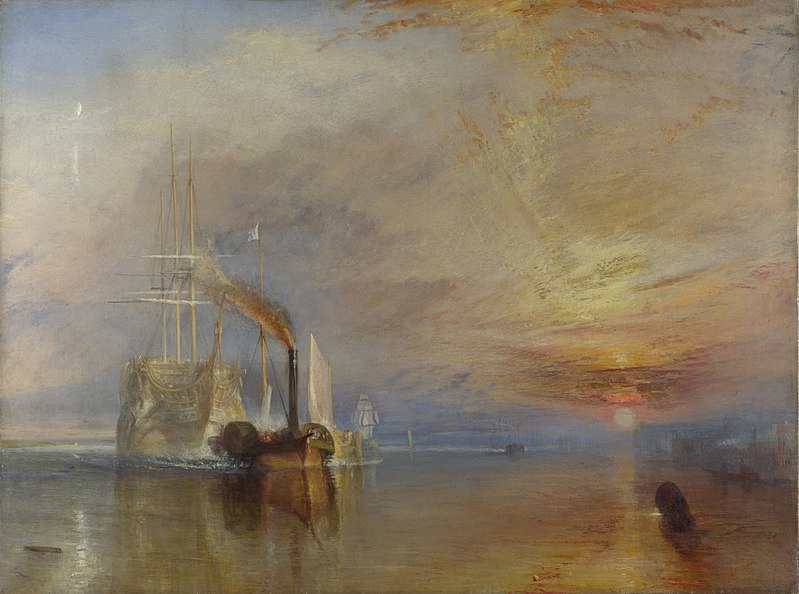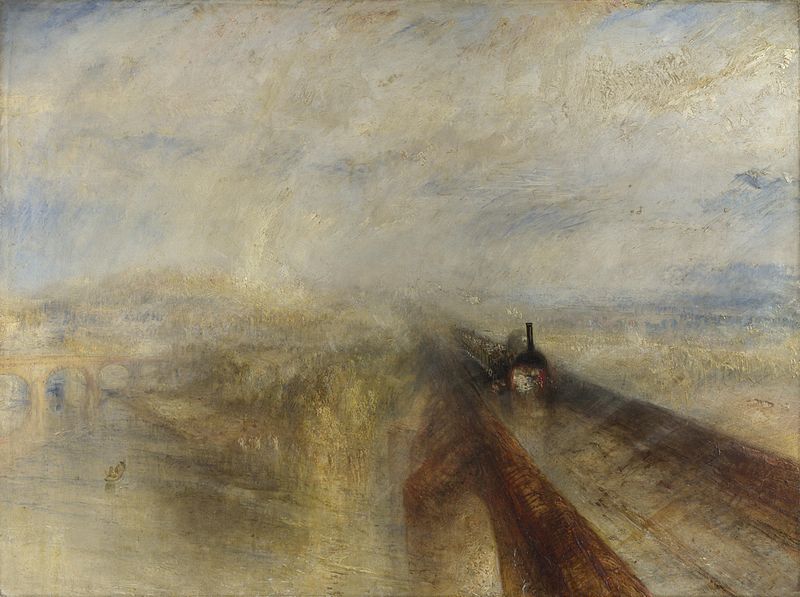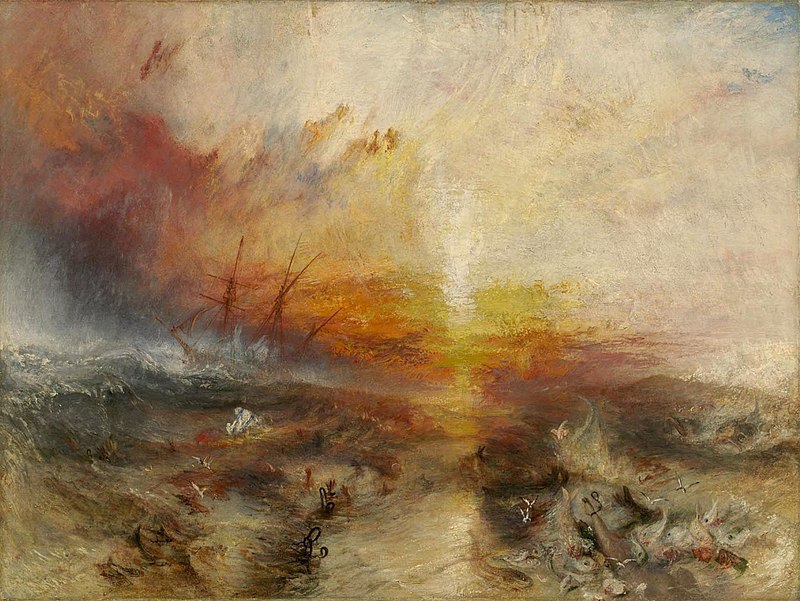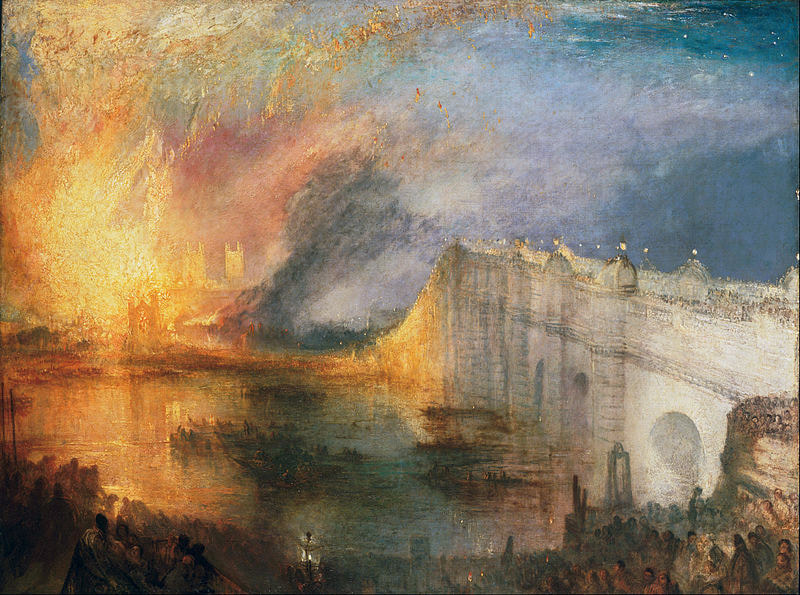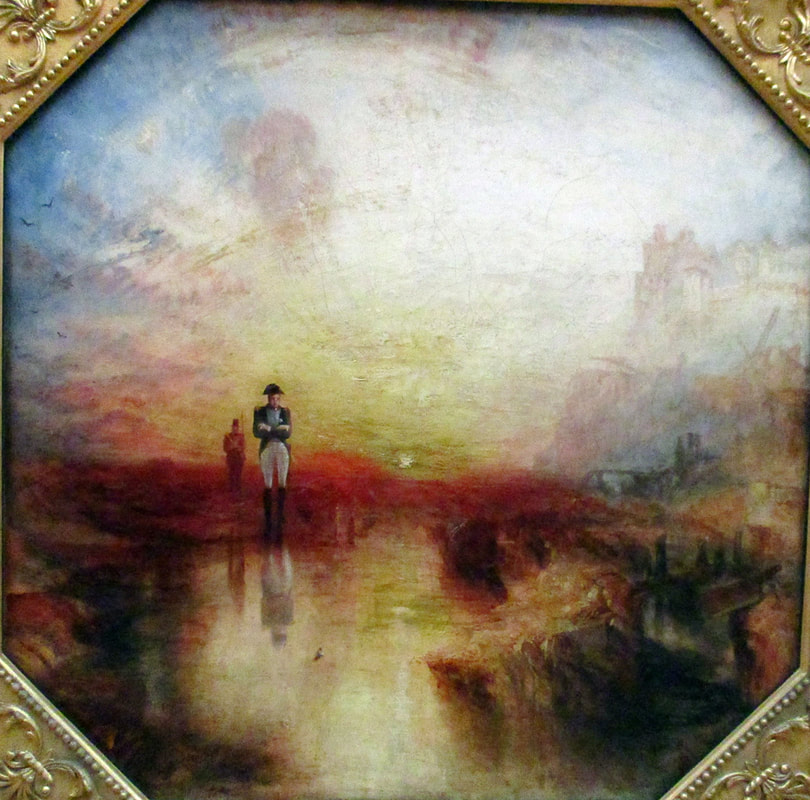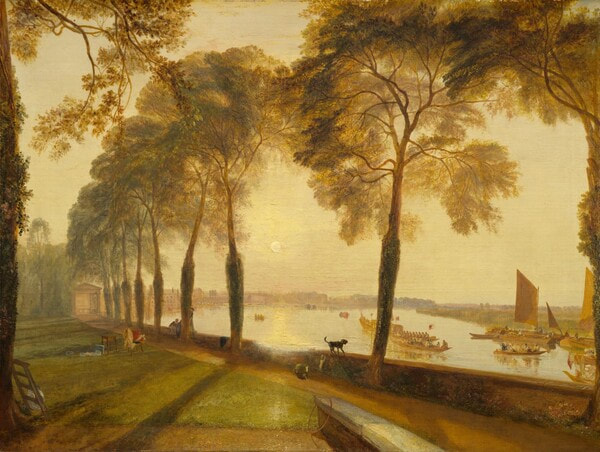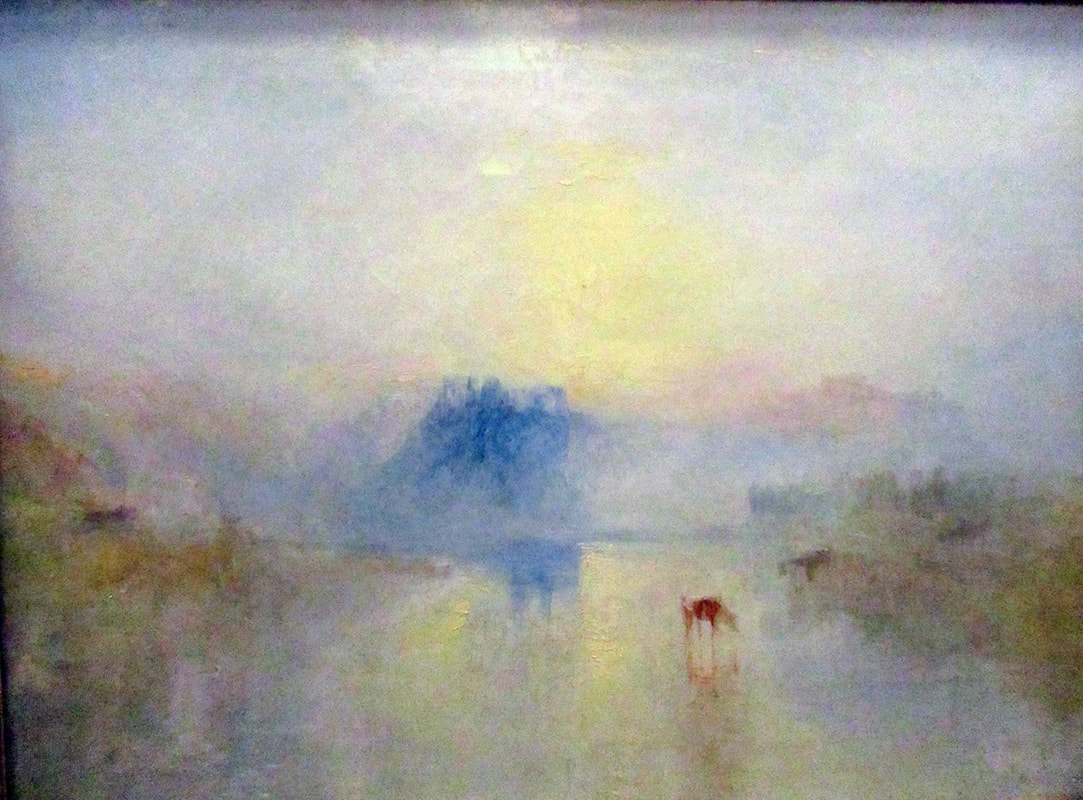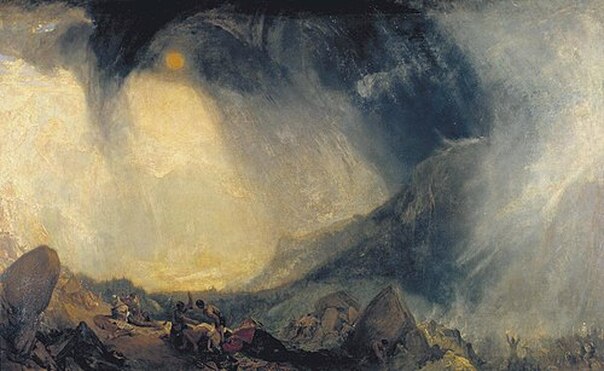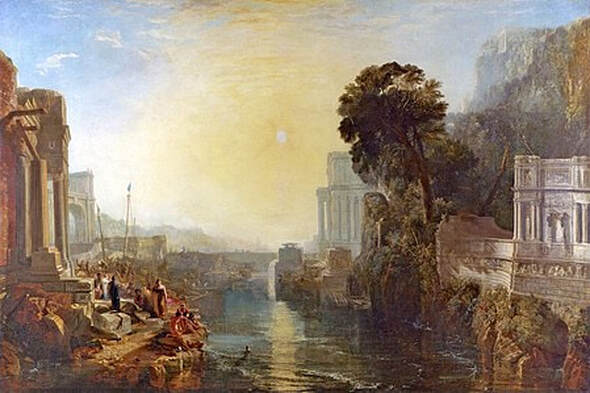AN APPRECIATION: JMW Turner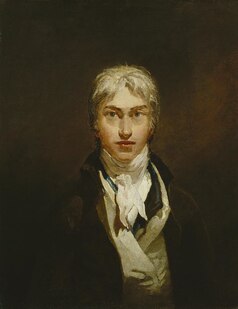 JMW Turner, Self-portrait JMW Turner, Self-portrait
Joseph Mallard William Turner has been called Britain's greatest painter. Producing work that appealed to his contemporaries, Turner was successful at a young age. However, he also produced unprecedented work that was to inspire generations of subsequent artists.
Turner's Life The exact date of Turner's birth is unknown; however, it is believed to have been in April 1775. He was brn into a working class family. His father was a barber and wig maker while his mother's father was a butcher. The family lived in the Covent Garden section of London. Tragedy struck early in Turner's life. Turner's only sister died in 1786. Around this time, his mother started showing signs of mental instablity and she was committed to a mental institution in 1799. She died in 1804. Due to these family difficulties, Turner was sent to live with his uncle in Brentford for a time. It was here that he received his only formal general education. In addition, it was here that he showed his first interest in producing art. Returning to London, his father was so impressed with his son's art that he displayed it in the window of his shop. The boy's landscapes impressed customers and sales resulted, providing income for the family. At age 14, Turner was admitted to the Royal Academy Schools. The Royal Academy of Art had been formed by several prominent British artists and had been given royal approval a few years before by King George III. It was already a very prestigious institution and was an arbiter of taste in Georgian society. Turner exhibited his first watercolor at the Royal Academy in 1790 and his first oil painting in 1796. Both were well-received. To obtain more income and to supplement his studies, Turner also worked in the studio of Thomas Malton where he learned architectural draftsmanship. Turner considered becoming an architect but Malton persuaded him that he should pursue painting. The young artist also made money painting scenery for the London theater. As his skill increased, Turner was able to sell more works. In addition his landscapes were well-suited to being made into prints, which could be distributed and sold to a wide audience. To find subjects for his works, Turner would tour through Britain each summer making drawings and watercolors of scenes, buildings and landmarks. When he returned to London, he used these works on paper as sources for oil paintings and more finished watercolors. Although biographers give the impression that Turner was not particularly popular among his peers, in 1799, at the age of only 24, Turner was elected an Associate of the Royal Academy. He was elected a full academician just three years later. In contrast, Turner's great contemporary rival John Constable was not elected as an Associate until he was 43 and had to wait another 10 years to obtain full membership. Turner took advantage of the brief pause in the Napoleonic Wars created by the Treaty Amiens in 1802 in order to travel to the Continent. He visited Paris where he studied the works of the Old Masters and traveled to Switzerland where he was awed by the majesty of the Alps. After the end of the Napoleonic Wars in 1815, Turner traveled extensively in Europe and was particularly captivated by Venice. He filled numerous sketchbooks while aboard and as with his British travels, the sights he encountered inspired works painted when he returned to his studio. Along the same lines, Turner sought to experience different weather conditions, especially at sea. He claimed to have had the crew of a sailing ship tie him to a mast so that he could experience a fierce storm at sea. He would then use such experiences in his art. In 1804, Turner took the unusual step of opening his own art gallery. It was contiguous with the lodgings on Harley Street where he had moved with his father a few years before. His father took care of the house and handled various tasks in the studio. A few years later, Turner purchased the first of a series of second houses that he would use from time to time. Turner never married but for 20 years from about 1799, he had a relationship with Sarah Danby. He allegedly had two daughters with her although some sources speculate that the mother of his children was actually Sarah's niece who worked as a housekeeper for Turner for a time. After the death of his father, Turner became increasingly pessimistic and eccentric. He divided his time between being the most famous painter in London and living a quiet life in Chelsea with a widow, Sophia Caroline Booth. The neighbors knew him as “Puggy Booth” and believed him to be a retired sea captain. Turner died of cholera on December 19, 1851. Underscoring the respect in which he was held, Turner's wish to be buried in St. Paul's Cathedral along side Sir Joshua Reynolds and Sir Thomas Lawrence as well as such contemporary national heroes as Lord Nelson and the Duke of Wellington was granted. Thoughts on Turner An unusual man, Turner was multi-faceted and unconventional. Turner was a landscape artist at a time when landscapes were not considered very highly. Moreover, the great tradition in British art was portraiture. Nonetheless, Turner believed that landscape painting could convey emotion and that it could be used to say something about life and the human condition. His success helped to elevate landscapes in the hierarchy of art. Turner pursued two styles. The first was somewhat conventional and patterned after artists such as Claude Lorrain, who Turner very much admired. Such works, found great acceptance among his contemporaries. His second style was uniquely his own. Using vibrant colors and little detail, these controversial works bordered on abstraction. These works inspired later artists and are his most popular works today. The Royal Academy played a central role throughout Turner's career but Turner was not an academician in the broader sense of that term. He received the vast bulk of his formal art training there and participated regularly in its exhibitions. Turner was proud of his election as Professor of Perspective and lectured at the Academy. He rose to be Acting President. However, his art was not the traditional art of the academy, eschewing form for color. Turner often went his own way. To illustrate, prior to the opening of the Royal Academy's annual exhibition, the Academy would set aside a day during which artists could make last touches to the works that they were exhibiting. Turner routinely used “Varnishing Day” to make major alterations to his works. On one such day, a fellow artist decided to play a joke on Turner so when Turner left the room, the other artist attached a small paper cutout of a dog to one of Turner's canvases ("Mortlake Terrace"). All of the other artists in the room expected Turner to be furious when he returned. However, Turner merely looked at the canvas, moved the dog slightly, added a bit of paint and left without saying a word. Turner could be counted on to do the unexpected. For subjects, Turner often looked to the past, in particular the classical myths of ancient Greece and Rome. However, he was also a man of his times. He included quotations from the works of contemporary poets such as Byron and Scott in the listings of his paintings in the Royal Academy catalogues. One of his works depicts the isolation of the defeated Napoleon in exile on St. Helena. From a boat in the Thames, Turner witnessed and captured the fire that destroyed the Houses of Parliament. The coming of the industrial age with its railroads and steam-powered ships was also a source of inspiration. While most of his contemporaries assumed the lifestyle and manor of the upper classes when they achieved success, Turner never tried to hide his working class origins. He maintained his Cockney accent and no one would have ever described him as dressing like a dandy. However, Turner mixed comfortably with the aristocracy. He routinely accepted invitations to visit their stately homes. The Earl of Egremont even provided Turner space for a studio at Petworth House where Turner painted some of his most Impressionistic works. During his lifetime, some of his enemies considered him an egotistical self-promoter. However, he made no attempt to be pleasing in his manor or in his dress. Furthermore, in his will he specified that his considerable fortune be used to help unfortunate artists. His relatives succeeded in persuading the courts not to honor such a peculiar bequest, although a sum was given to the Royal Academy to aid distressed artists. However, the bequest of his remaining paintings to the British nation was honored and those hundreds of works are now divided between London's National Gallery and the Tate Britain. |
Above: "The Fighting Temeraire" depicts a sailing ship that played an important role in the British victory at Trafalgar being towed to the breakers by a small steam-powered tug. The picture was voted Britain's greatest painting in a poll by the BBC.
Below: Turner also addressed the coming of the industrial age in "Rain, Steam and Speed." Turner was also inspired by contemporary events. In "Slavers Throwing Overboard The Dead And Dying" (above) Turner depicted an incident that shocked the British people in which a becalmed slave ship jettisoned its human cargo. Turner also painted the "Burning of the Houses of Parliament" (below), recording a scene he witnessed in 1834.
Above: "The Exile and the Rock Limpet" is one of a few Turner paintings containing a readily-identifiable person i.e., Napoleon.
Below: Turner added the figure of a dog to "Mortlake Terrace" in response to a joke played on him by another artist (see text). Turner often depicted unusual weather conditions that he had observed such as in "Norham Castle, Sunrise" (above) and in "Snowstorm: Hanibal and His Army Crossing The Alps" (below)
Above: One of Turner's less abstract works is "Dido Building Carthage." In his will, Turner specified as a condition to his bequest of hundreds of paintings to the British nation that this painting be hung next to Claude Lorrain's "Seaport with the Embarkation of the Queen of Sheba." Apparently, Turner wanted to show that his abilities were on a par with Claude's work, which Turner admired.
|
Artist appreciation - JMW Turner
